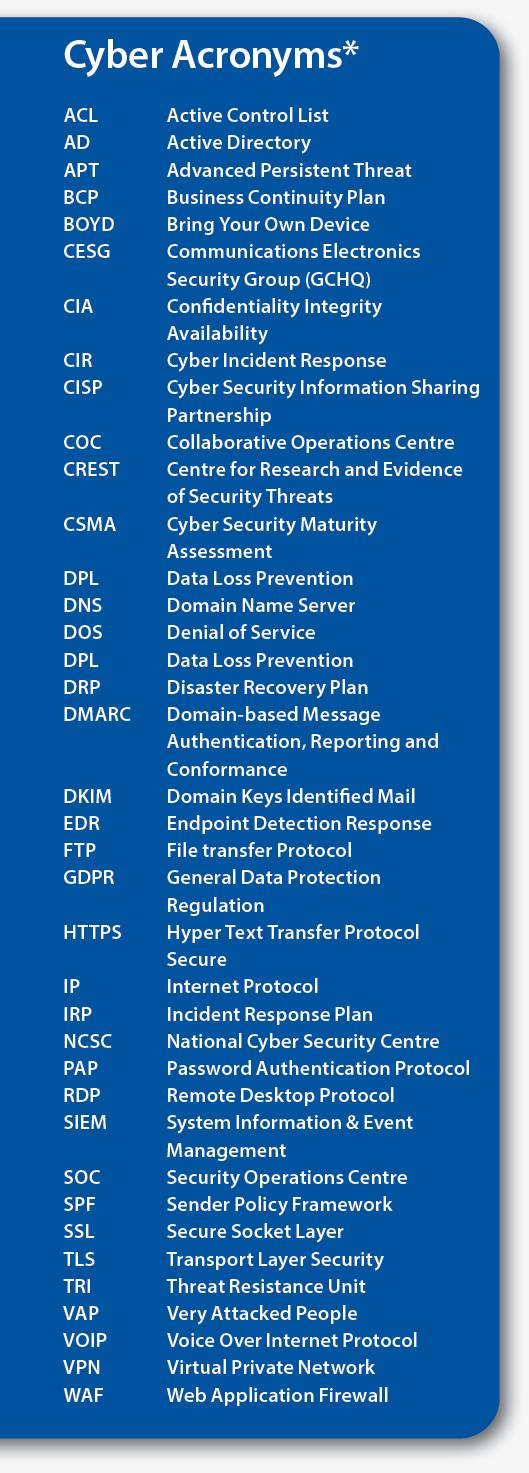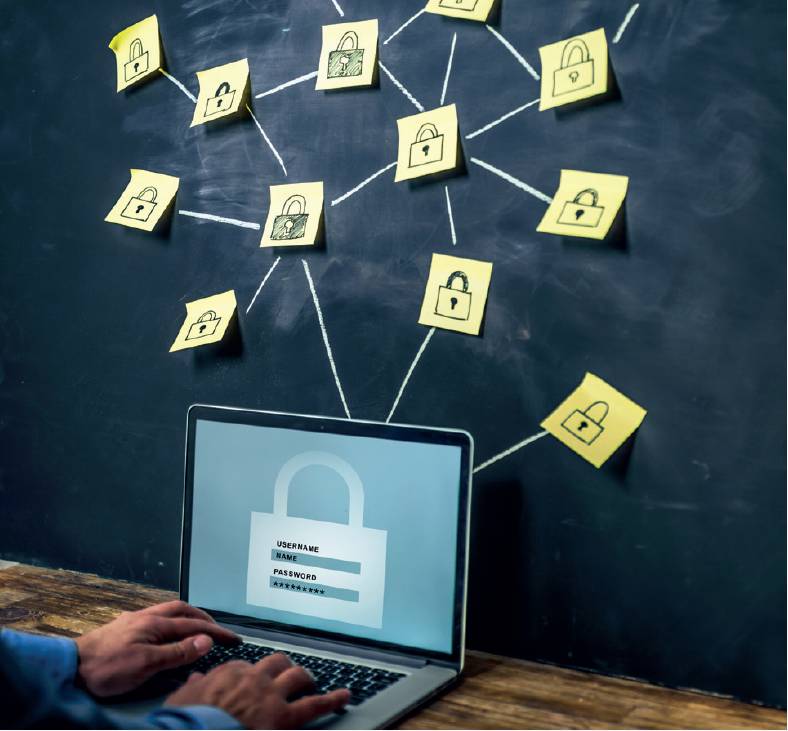Practice management
Cybersecurity: train employees to be your ‘human firewall’
Teaching employees to have greater awareness and understanding of threats offers organisations a chance for cybersecurity where staff become a ‘human firewall'.
 About the author Alastair Murray is director of the Bureau.
About the author Alastair Murray is director of the Bureau.
Organisations large and small continue to debate how to improve their cybersecurity awareness. Some firms, through their General Data Protection Regulation compliance, are making good progress, but few organisations seem able or willing to grapple with the number one cause of cybercrime: human error.
Whilst many firms say they understand the risks, few take these threats seriously enough. At the same time, firms cannot decide what to do, often because of the impenetrable language used by security software suppliers to describe their services, not to mention all the acronyms (see left)!
Humans are the prime target
The need for strong firewalls, anti-malware software and operating system patching is now understood; the big issue continues to be the human factor. It is estimated that less than 1% of attacks are now targeted at system vulnerabilities, with staff curiosity and a trusting nature the cybercriminal’s weapon of choice.
Phishing fraud
E-mail remains the primary attack mechanism, with malicious spam, ransomware, hacking and phishing fraud continuing to be delivered this way. Making phishing e-mails even more effective is social engineering.
The widespread use of social media by private individuals and businesses is a valuable source of information. With so much being published, it is relatively easy to piece together profiles through which to steal personal data, passwords, identities, Cloud system logins and bank details, to name a few. Social engineering is used to attack huge multi-national organisations, small- and medium-sized enterprises and small enterprise firms of five staff or less, in any industry, and in the homes of private individuals.
I am not a target
 There continues to be no correlation between the size of targeted audiences or industry types and the number of attacks they receive. Large multinational organisations are attractive for their deep pockets, but smaller companies remain vulnerable owing to their relative lack of cybersecurity controls and awareness. Both continue to prove lucrative for cybercriminals.
There continues to be no correlation between the size of targeted audiences or industry types and the number of attacks they receive. Large multinational organisations are attractive for their deep pockets, but smaller companies remain vulnerable owing to their relative lack of cybersecurity controls and awareness. Both continue to prove lucrative for cybercriminals.
Phishing e-mail delivery trends continue, with 2018 and the first six months of 2019 seeing few delivered over the weekend and the majority - over 32% - delivered on Mondays, presumably to exploit employee tiredness and the general urgency of Monday mornings. This then gradually drops off in frequency as the week progresses.
Popular phishing e-mail subjects are associated with food, diets, health, miracle cures and herbs; romance is another, of course, and financials - in the form of competition prizes - are all regulars. In addition, cybercriminals will exploit human disasters by latching onto charitable appeals for aid, with fake websites designed to look like the real ones. Every year these scams are highly profitable.
Malware
Improved attention to operating systems patching has helped reduce the damage malware once caused to unpatched software. However, malware distribution continues to be an effective method when human interaction is engaged. Malware campaigns distributed in 2018 and 2019 that rely on users to click web links or attached documents or download macros, whilst ignoring security pop-up prompts continue to prove very successful.
Social engineering
Social engineering remains a key strategy for cybercriminals. Convincing management and employees to ‘click’ requires work and knowing who to target. By focusing on finding the identities of those with access to the purse strings or special privileges and those with influence inside an organisation, it is quite easy to fake their identities and pass them off as real. In addition to these specific staff targets, criminals find ‘shared accounts’, where staff share a login, even easier to crack.